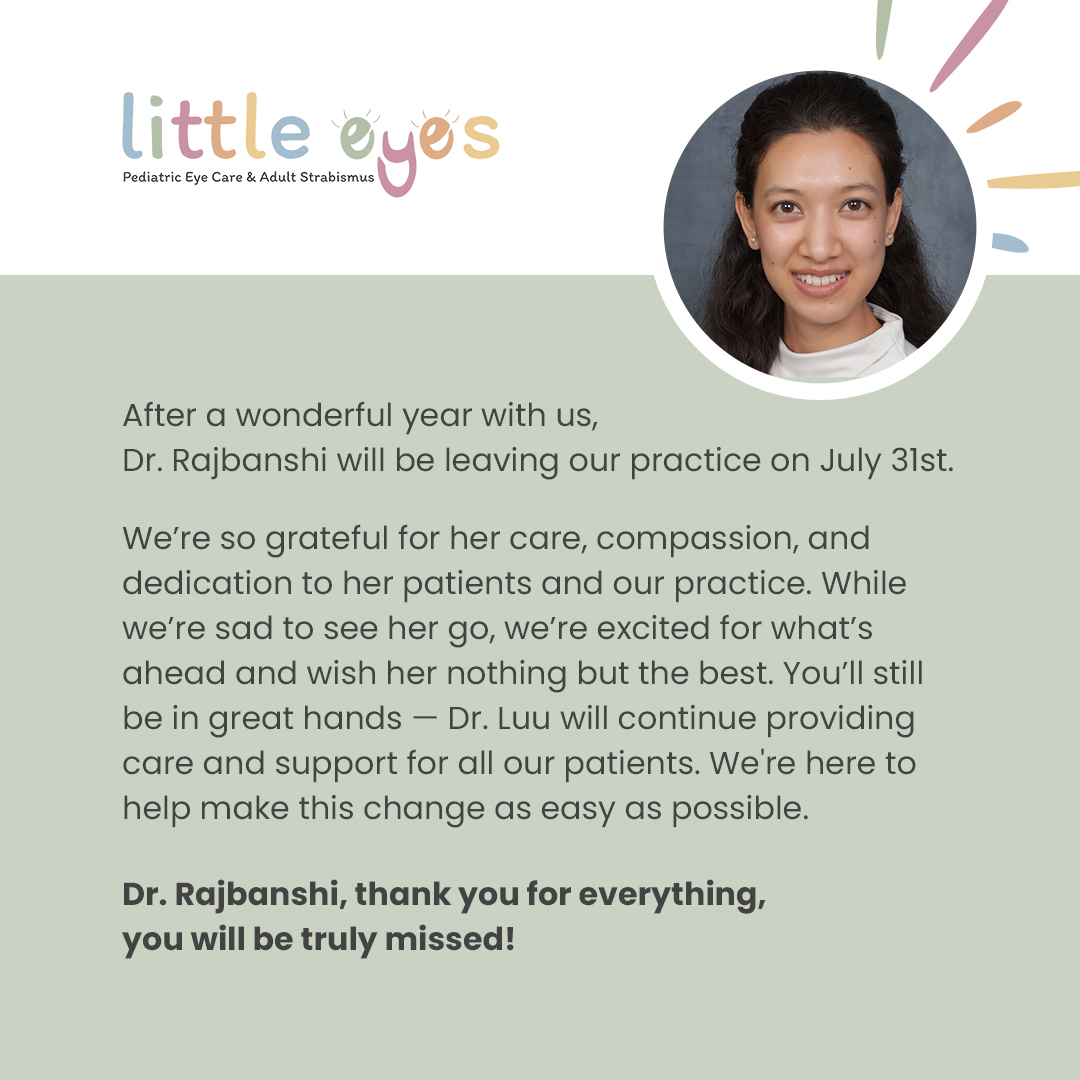What is Amblyopia?
Amblyopia, commonly referred to as "lazy eye," is a condition where one or both eyes does not receive enough visual stimulation for proper development of the visual system. This condition affects children from birth up to around 8 years of age. After this critical period, vision may not be fully correctable to 20/20 even with the proper glasses or contacts. To help ensure that your child achieves the best possible vision with both eyes, early intervention is essential.
What causes Amblyopia?
Amblyopia can be classified into three types: refractive, strabismic, and deprivational.
Refractive amblyopia occurs when a child has a significant or asymmetric refractive error that impairs clear vision in one or both eyes.
Strabismic amblyopia arises from an eye turn (strabismus), where a constant misalignment of the eyes prevents proper central fixation and visual development.
Deprivational amblyopia happens when an anatomical obstruction blocks clear vision in the eye. Examples include congenital cataracts, ptosis, or corneal opacities.
How is Amblyopia treated?
Prescription glasses are typically the first step in treating amblyopia, providing the best corrected vision possible. In some cases, glasses alone may be sufficient to achieve optimal visual potential. However, if further intervention is needed, patching or atropine eye drops are commonly used.
Patching involves covering the stronger eye, which compels the weaker eye to work harder and receive more visual stimulus. This treatment is usually done for about 2 hours per day, but the duration can be increased for more severe cases. If a patient has difficulty keeping the patch on, atropine eye drops can be used to blur vision in the stronger eye, thereby encouraging the use of the weaker eye.
In some instances, surgery may be necessary, particularly in cases of deprivational amblyopia. A comprehensive eye exam is required to diagnose the type of amblyopia and determine the most effective treatment plan for each individual patient.









